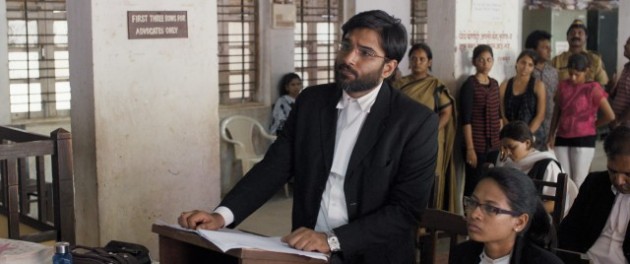
‘Court’ nominated for an Oscar – Chaitanya Tamhane’s Amazing Journey
‘Court’ has been selected as India’s official entry to the Oscars by the Film Federation of India, and may be the country’s chance to bring home the gold. This film from first-time feature filmmaker Chaitanya Tamhane has touched a chord in many different audiences and won over 17 international awards as well as India’s National Film Award.
As Laya Maheshwari wrote in Rogerebert.com, “A courtroom drama usually offers at least some of the following elements: a fiery orator, high stakes, an evolving case, thrilling arguments and some degree of resolution—even if it’s not a happy one. “Court” offers none of these elements. The oration from the lawyers practically dares you to stay awake. The case itself is jaw-dropping in its staidness. The arguments are routinely filled with jargon, and this jargon may even be irrelevant. For most of its 116-minute runtime, a resolution appears quixotic.And yet, Indian filmmaker Chaitanya Tamhane’s first feature is a masterpiece, one of the best films of the year. How did this happen?”

So how does a filmmaker’s mind work? Here is part of a fascinating interview with Chaitanya Tamhane (on the film’s website) which makes you understand how this film evolved, right out of the embers of real life.
What inspired you to tell the story of a trial in Mumbai, and how did you manage to craft a
representation of the Indian court system?
The judiciary is an authorized but violent institution that metes out life and death judgments. It‘s one of
those platforms, where otherwise bracketed people from across class and cultures, interact and entwine.
I was curious to explore the figures of authority involved in a trial: the judge, prosecutor and defence lawyer, who are themselves slaves to rules, protocol, and hierarchy.
A Day in ‘Court’ – watch the video
Real Life in Court: Stranger than Fiction
I very soon realized that these people come from the same families, the same socio-cultural context that the rest of us belong to. The only difference is, that they happen to be in a position of power. So in that way, the film also became a study of the society, the collective.
I started out by interviewing a lot of lawyers, activists, and academics. Their insights about the judiciary
became the foundation of the script. I was also inspired by the trials of cultural activists across the country, who were persecuted for their ideologies rather than their actions. Apart from spending many hours in courtrooms, I referred to a lot of news articles, law books, and research papers, while writing the trial sequences of the script.
When it came to shooting these scenes, we wanted to maintain a certain distance and objectivity. Instead of fiction films of the genre, which often aim for a subjective experience, we referred to documentary footage of actual trials. Since you cannot get permission to shoot in an actual courtroom, we had to build a set, which recreated the atmosphere of a lower court. No photography or documentation is allowed in the courts, so the production designers had to work from memory and rely on the notes they had made secretly while attending trials.
Instead of drawing inspiration from other films or literature, I found the experience of attending actual trials in the lower courts of Mumbai far more enriching. Some of the stories unfolding in those rooms are indeed stranger than fiction. What made these stories unlike anything I had seen on screen was the unique cultural milieu of Mumbai they were set in. In that sense, COURT is almost a subversion of the classic courtroom structure as seen in films. Here, the documents are misplaced, the witnesses are vague, and everybody wants to get out of that courtroom as soon as possible.”
Related Articles:

2 Comments
Via India Group on Google
Rashmi Agarwal +1’d
Baljeet Meena +1’d
Nikhil Reddy +1’d
suruchi suru +1’d
Vijay Jagtap +1’d
CHINNATHAMBI C +1’d
Ramoji Chennu +1’d
Michael Roseberry +1’d
Very interesting story! I remember this case in 1990 of two families suing Judas Priest (a heavy metal band) for their provocative songs causing their two teens to commit suicide! This reminded me of that! http://www.nytimes.com/1990/07/17/arts/2-families-sue-heavy-metal-band-as-having-driven-sons-to-suicide.html